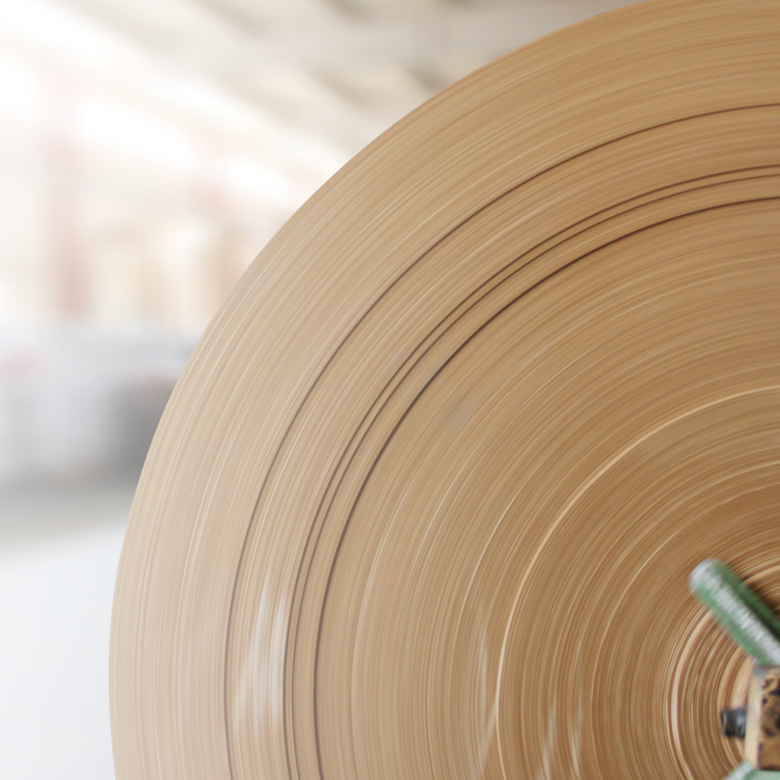Hydrophobation is crucial for all types of packaging board and paper, from foodservice board to containerboard and carton. It provides resistance against moisture and liquid and helps improve other physical properties of the board, such as strength, dimensional stability, and coating and converting properties. Recently, Kemira introduced a new chemistry for internal sizing, MSOHO. Made from maleated high oleic sunflower oil, it helps paper and board producers to take one step closer to fully bio-based products.
How does the renewable sizing compare to other available internal sizing chemistry?
MSOHO is as efficient and as applicable as the synthetic sizing agent ASA, with the benefit of being based on renewable raw material instead of fossil-based olefins. There are other traditional chemicals used for hydrophobation of paper and board which are also made from renewable raw materials, such as palm-oil based AKD emulsions or rosin sizes that are based on gum or tall rosin from pine trees or even from the side-streams originating from pulp processing. However, AKD and rosin sizes have some limitations on their efficiency concerning e.g. the applicable pH range, which the widely-used ASA and now MSOHO – or the sunflower ASA – overcome.
The renewable raw material used in MSOHO is sunflower oil. Why was sunflower oil chosen?
We tested several other raw materials as well, e.g. linseed, rapeseed, and soybean oil. High oleic sunflower oil has the most suitable fatty acid composition that provides the needed properties, such as reasonable viscosity, for the internal sizing product. In addition, one of the goals for the product development was to minimize transportation, and sunflower oil is a locally available raw material. We’re currently manufacturing the sunflower ASA at our Krems site in Europe.
Is it sustainable to use a raw material that comes from the food chain, such as sunflower oil?
Replacing fossil-based olefins with vegetable oil as the raw material is a sustainable choice and impacts the end products’ environmental footprint. The type of sunflower oil we use is lower quality food-grade and mainly used in the food industry as frying oil. Furthermore, functional chemistry for the paper and board industry is a high value end-use for renewable seed oil, compared to e.g. using it for energy production.
Is the sunflower ASA applicable to all paper and board grades?
The sunflower ASA is a more sustainable alternative to standard ASA sizing agents and can be used similarly for hydrophobation of e.g. food service board, container board, and carton. We already have application know-how from the production of various grades, e.g. sack paper and multi-layer board with very high sizing requirements.
Apart from being a more sustainable solution, what other advantages does the renewable sizing provide?
MSOHO is as efficient and as applicable as olefin-based ASA so it has the same technical benefits. It currently fulfills the regulatory requirements of BfR and FDA and is compliant to be used in food packaging board. The main advantage for a paper or board producer is to steer away from fossil-based raw materials in their production. In addition, the sunflower ASA has shown better stability against hydrolysis and higher resistance to peroxide compared to traditional ASA in the paper and board machines.
There’s also a possible additional benefit for mills that are suffering from deposits due to steam distillation. In the dryer section of a paper or board machine, ASA sizing can evaporate and later build up sticky deposits that can cause paper defects, web breaks, and even increased fire risk. We have sound reasons to believe that the higher molecular weight of MSOHO can reduce this steam distillation. We are currently planning to start an industrial trial to confirm this.
Does the sunflower ASA require special emulsification equipment, or can it be applied with the standard equipment currently in use for ASA sizing? What about emulsifiers?
MSOHO is emulsified similarly as standard ASA and our current commercially available product, Fennosize MO 30, can be applied with equipment that is commonly available at paper and board mills. This also makes it straightforward to start a mill trial. Our customers have successfully used e.g. the same type of starch that they had used with standard ASA.
How does this product compare to ASA sizing in terms of cost efficiency?
ASA sizing in general has superior efficiency compared to other internal sizing chemistries. Our new product is as efficient as ASA products: same sizing performance can be achieved with roughly the same chemical consumption. As the cost of the product is in the same range as the standard ASA, the more sustainable option provides the same cost efficiency.
The currently available commercial product FennoSize MO 30 consists of 30% of MSOHO and 70% of standard ASA. Why isn’t the share of renewable raw material higher?
So far, we have run successful customer trials with sizing blend that already contains 40% MSOHO and are steadily working toward our goal to increase the share of renewable raw material content in the product to up to 100%. The reason for the conservative approach is the higher viscosity of MSOHO. This means that some adjustments might be needed in the equipment at the mill site to achieve fine enough emulsion of the sizing agent when the renewable content in the product is higher. We’re investigating possible solutions, such as heating the material before pumping it to the emulsification unit or using stronger pumps.
When will 100% renewable ASA sizing be available?
We have already run the 100% renewable sizing at a pilot paper machine and are ready and eagerly waiting to start a mill trial that we’ve had to postpone due to the global pandemic.



